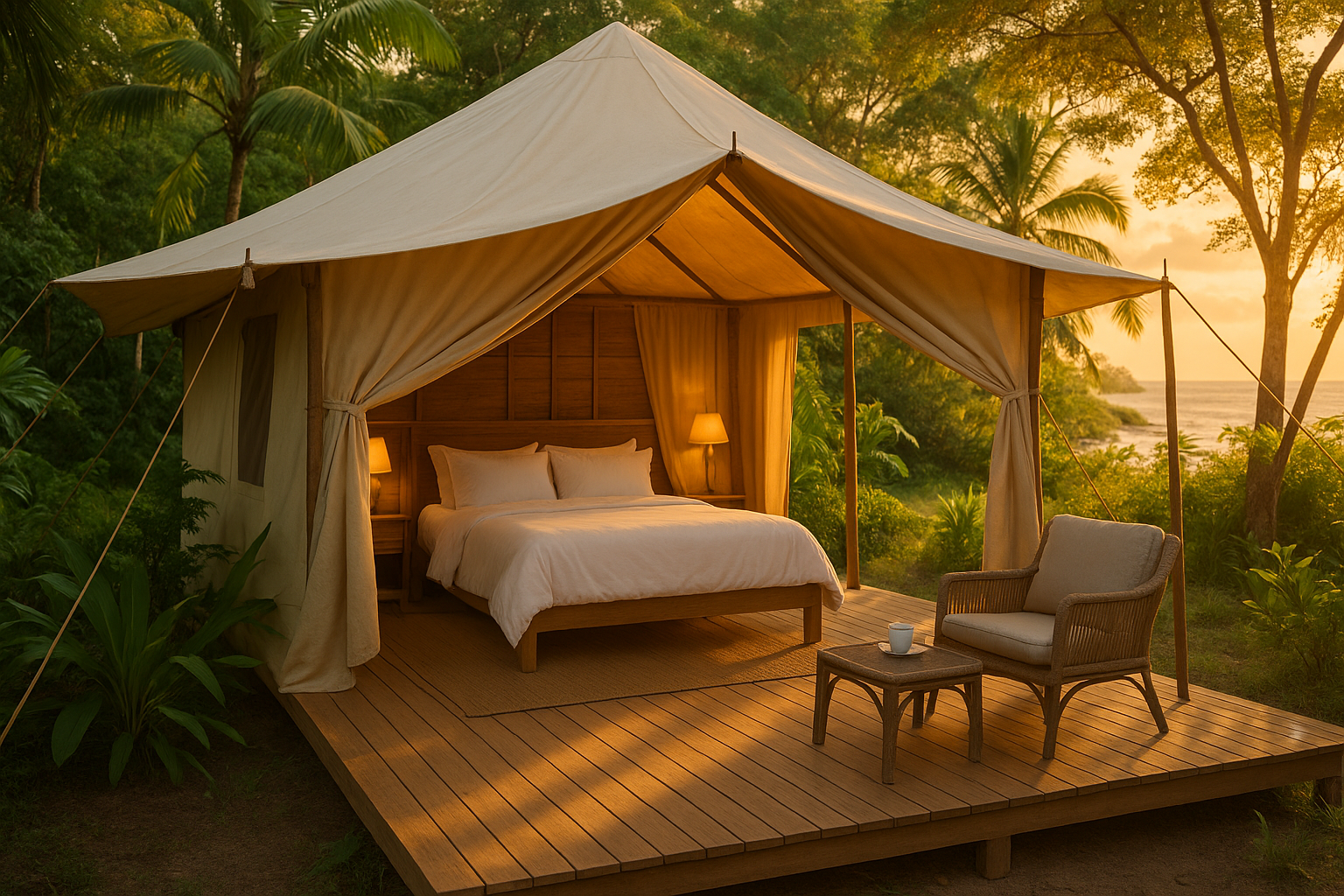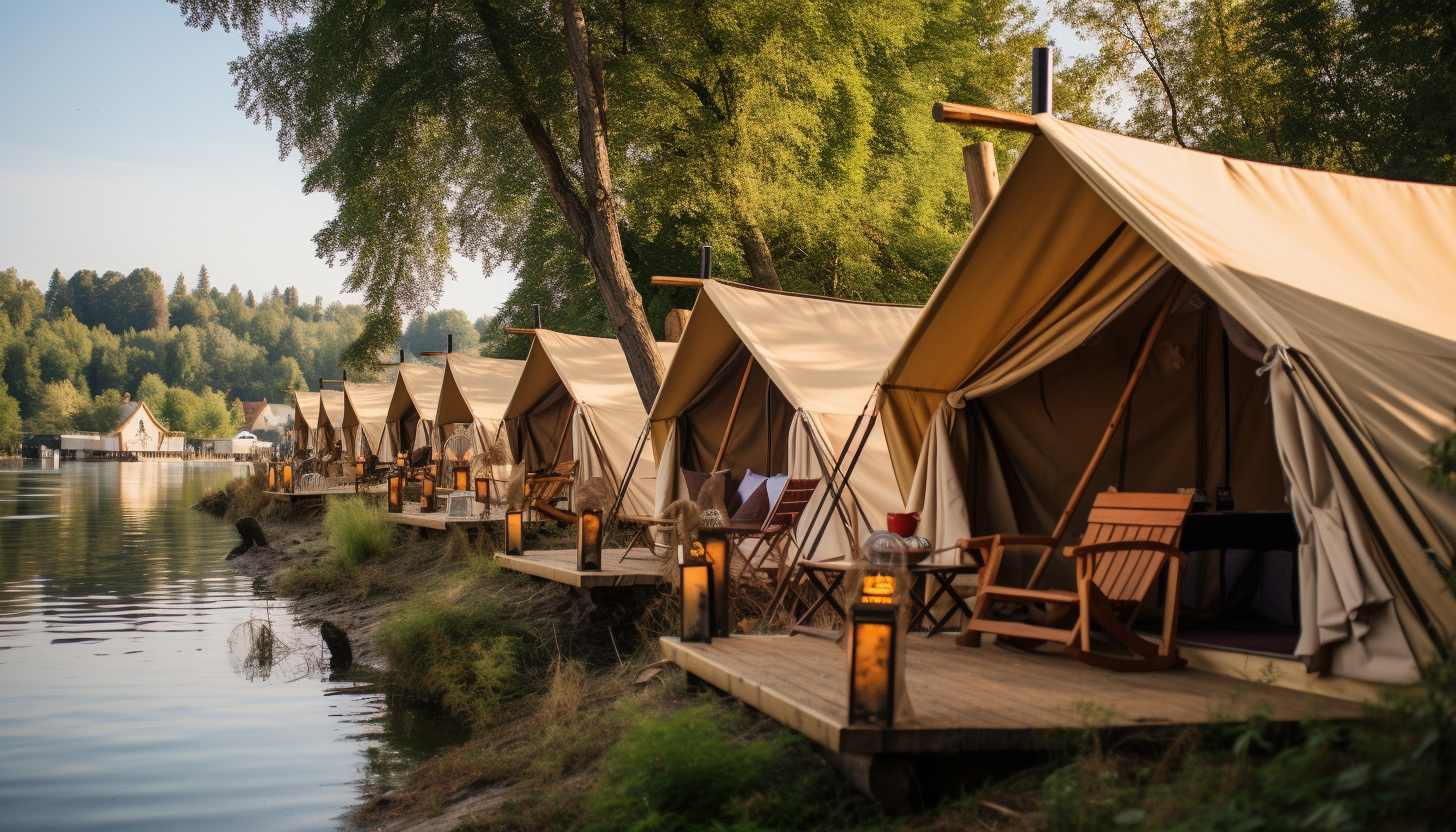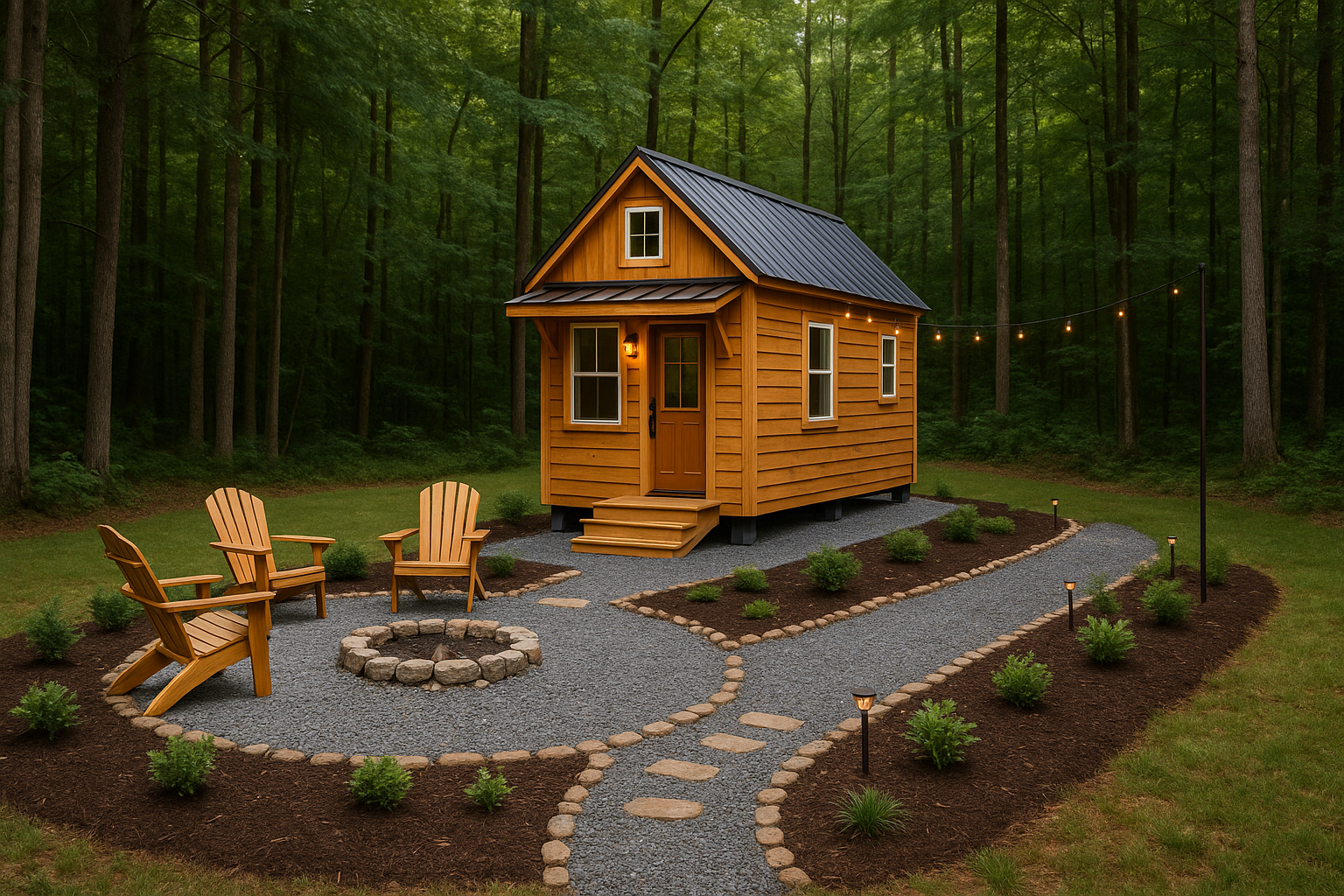Glamping is a blend of two seemingly opposite worlds—glamour and camping. The term itself is a portmanteau of “glamorous camping,” and it describes an outdoor experience that combines the adventure and raw beauty of traditional camping with the comfort, style, and luxury typically found in high-end resorts. Glamping has become extremely popular in recent years, not only in the Americas but also in Europe and Asia.
In this blog, we will discuss the investment side of Glamping.
The Origins of Luxury Camping
While “glamping” is a modern term, the concept has historical roots. Wealthy explorers and royals throughout history have sought out nature without sacrificing comfort. Think of the lavish safari tents used by British aristocrats in Africa or the luxurious portable yurts used by Mongolian rulers centuries ago. These early versions of Glamping involved bringing the comforts of home—fine furniture, plush beds, and gourmet food—into remote, wild locations.
The contemporary glamping movement began to take shape in the early 2000s, driven by travelers who sought to connect with nature without sacrificing comfort. Today, Glamping has become a booming industry with thousands of unique accommodations offered worldwide—from treehouses and safari tents to Airstream trailers, domes, cabins, and even underwater lodges.
What Makes Glamping Different From Camping?
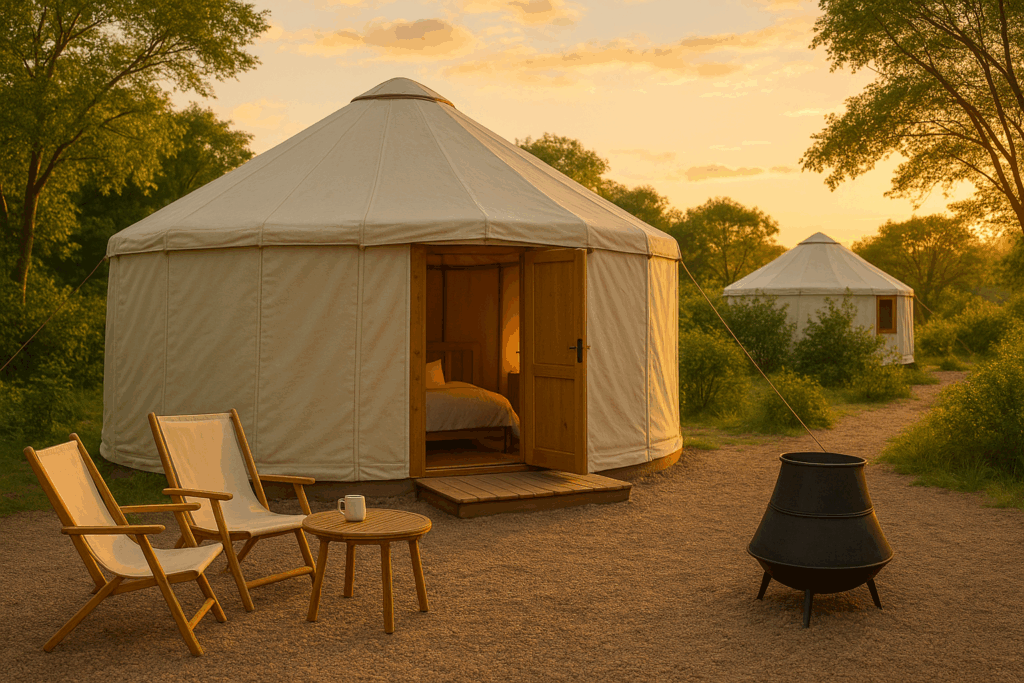
Traditional camping means rolling out a sleeping bag on the ground, setting up your tent, and cooking meals over an open fire. It’s raw, simple, and all about getting back to basics. Glamping, on the other hand, keeps the adventure but skips the hardship. You still get the fresh air and scenic views—but with a cozy bed, hot showers, and maybe even room service. Instead of a sleeping bag on dirt, glampers may find themselves in a queen-sized bed with Egyptian cotton sheets inside a spacious canvas tent equipped with electricity, running water, and Wi-Fi.
The key differences between camping and Glamping include:
- Accommodations: Glamping sites can be anything from a fully-furnished tent with hardwood floors to a luxury treehouse with a hot tub.
- Amenities: Expect en-suite bathrooms, heating and cooling systems, private chefs, and even spa treatments.
- Effort: Traditional campers often carry, set up, and break down their gear. Glampers typically arrive at a ready-made setup where everything is already in place.
- Cost: Glamping is generally more expensive than camping, reflecting the added comfort, services, and ambiance.
Types of Glamping Accommodations
Glamping includes a variety of options. There are many different types of glamping accommodations, catering to different tastes, climates, and levels of luxury:
- Safari Tents: Inspired by African safaris, these spacious canvas tents are often built on wooden platforms and include real beds, rugs, and furniture.
- Yurts: Circular tents traditionally used in Central Asia are now outfitted with modern comforts like wood stoves and private bathrooms.
- Treehouses: Elevated lodging that brings out the inner child while offering stunning views and luxurious interiors.
- Domes: Futuristic, semi-transparent structures that allow for stargazing from the comfort of your bed.
- Airstreams and Vintage Trailers: Renovated RVs and trailers offer a retro, mobile twist on Glamping.
- Cabins and Tiny Homes: For those who want the outdoors with the safety and stability of four solid walls.
- Eco Pods: Sustainable and minimalistic, designed to leave a small footprint while offering a big experience.
Why People Choose Luxury Camping
Glamping appeals to different groups of people for different reasons. For some, it’s the perfect compromise between experiencing nature and maintaining creature comforts. For others, it’s about trying something unique and memorable.
- Comfort and Convenience: No sleeping bags or bug bites. Glamping offers hotel-level comfort in beautiful, remote locations.
- Connection with Nature: Despite the luxury, glamping sites are usually located in natural settings—mountains, forests, beaches, or deserts.
- Sustainability: Many glamping operators emphasize eco-friendliness, using solar power, composting toilets, and sustainable materials.
- Instagram Appeal: Glamping setups are often designed with aesthetics in mind, making them ideal for showcasing on social media.
- Special Occasions: It’s a popular choice for romantic getaways, honeymoons, family vacations, and even weddings.
The Rise of the Glamping Industry
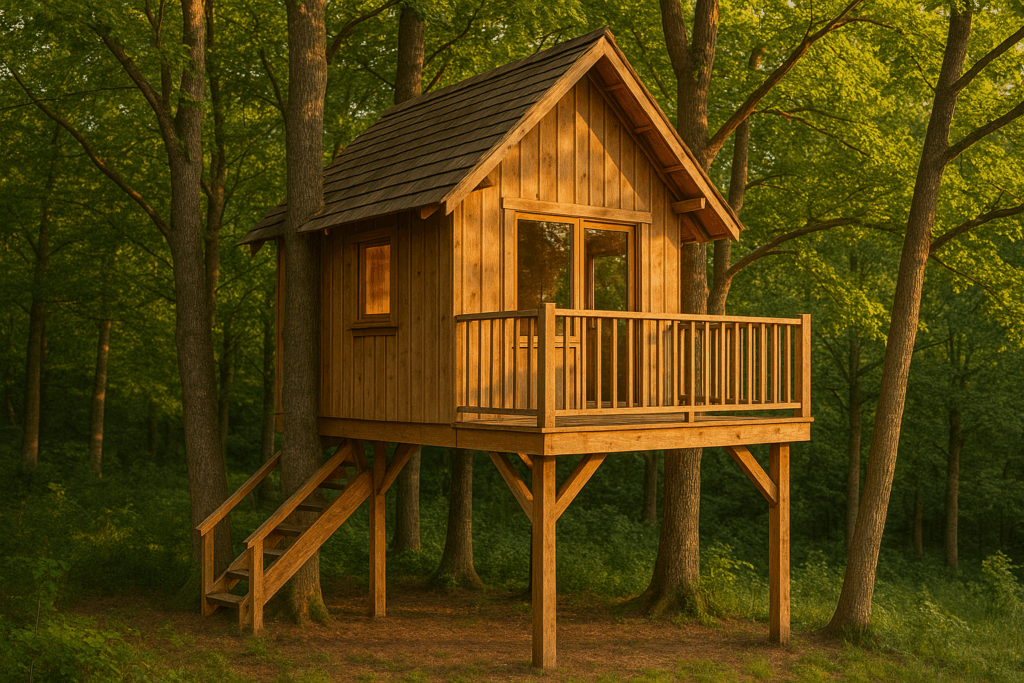
Glamping has evolved into more than just a travel trend—it’s a rapidly growing global industry. According to market analysts, the glamping sector is expected to continue expanding, driven by eco-tourism, remote work flexibility, and travelers’ desire for meaningful and experiential vacations and lifestyles.
Major hotel brands and travel platforms, such as Airbnb and Booking.com, now offer glamping-specific filters. Meanwhile, dedicated glamping companies like Under Canvas, AutoCamp, and Collective Retreats offer curated, high-end outdoor lodging experiences in locations near national parks and scenic wonders.
Additionally, the COVID-19 pandemic accelerated interest in Glamping as people sought socially-distanced, nature-based travel options. The appeal of wide-open spaces, private accommodations, and minimal contact with crowds positioned Glamping as a safer and more appealing vacation alternative.
Where to Go Glamping
You can go Glamping almost anywhere in the world. In the United States, popular glamping destinations include:
- Yellowstone and Glacier National Parks (Montana/Wyoming): With stunning mountain views and wildlife.
- Big Sur, California: Cliffside tents and treehouses overlooking the Pacific Ocean.
- Sedona, Arizona: Desert glamping with dramatic red rock backdrops.
- The Catskills, New York: Woodsy retreats just a few hours from New York City.
Globally, countries like Costa Rica, New Zealand, South Africa, Portugal, and Thailand offer unforgettable glamping experiences in rainforests, on beaches, or in remote valleys.
Is Luxury Camping Right for You?
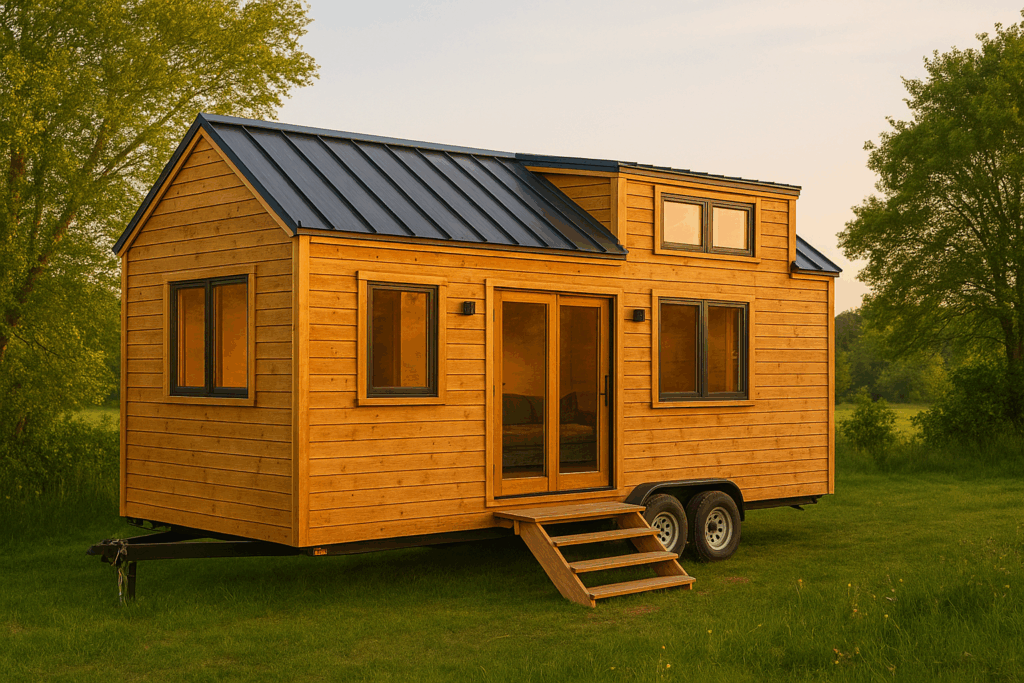
Glamping is ideal for travelers who want to reconnect with nature while reducing their living costs without sacrificing comfort or style. It’s also an excellent option for families with young children, older adults, or anyone with physical limitations that make traditional camping too demanding. If you love nature but hate the hassle of pitching a tent, Glamping is your sweet spot.
On the other hand, Glamping is quietly becoming a long-term lifestyle choice. Glamping itself places young people in an ongoing position to live well below their income level and save money.
In today’s world of rising housing costs and urban congestion, long-term Glamping offers a refreshing alternative. Imagine waking up to the sound of birds instead of traffic, surrounded by natural beauty rather than concrete walls—and all at a fraction of what it costs to live in a city apartment.
However, Glamping isn’t for everyone. If you’re seeking total solitude, prefer DIY experiences, or are on a tight budget, you may find traditional camping more fulfilling. However, a combination of conventional camping with luxury camping over time is a doable plan.
Top Glamping Problems and How to Resolve Them
While Glamping offers a comfortable way to enjoy nature, it isn’t without its challenges. Some of the most common issues include internet access, unpredictable weather, food storage, hot water availability, and flushing toilets. Fortunately, most of these can be resolved with a bit of planning and modern technology. Read Top Glamping Problems and How to Resolve Them.
Final Thoughts
Luxury camping offers the best of three worlds: adventure, comfort, and a lower cost of living. It transforms a simple night under the stars into an extraordinary experience where you don’t just survive in the wild—you thrive.
Whether you’re watching the sunrise over a mountain range from your deck, soaking in a cedar hot tub in the woods, or sipping wine by the fire in a luxury yurt, Glamping invites you to experience nature in a whole new way—comfortably, stylishly, and memorably.
Resources
Where to Go Clamping in the United States
Glamping As an Investment – Coming Soon

